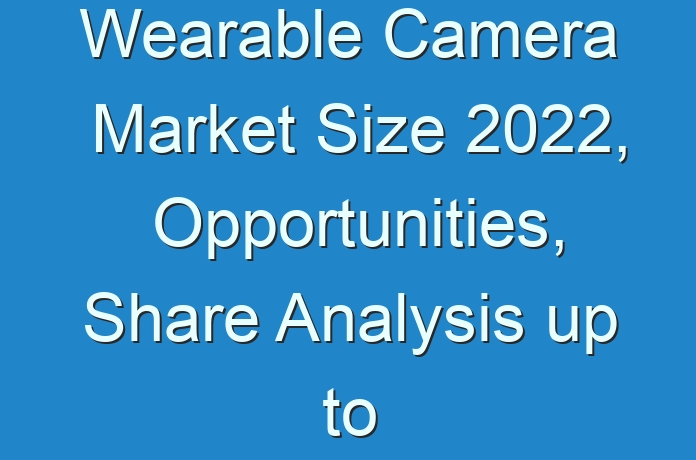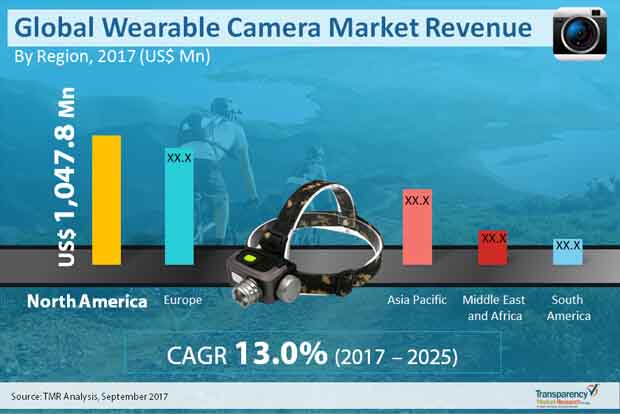
Global Wearable Camera Market: Snapshot
The global wearable camera market is primed to grow at a solid pace on account of the soaring popularity of tourism, adventure, and sports, swift penetration of internet in most corners of the world, and an explosive growth in social media users. Besides, an array of products to suit every need and budget, and competitive pricing on account of strong competition among players is also serving to boost uptake in the market.
Currently, the global wearable camera market is fragmented in nature because of the presence of numerous national and international players. In the years ahead, the market is expected to see foray of new players which increase the degree of competition. In order to steal a march over their competitors, companies are focusing on product development and affordable pricing strategy.
According to Transparency Market Research, the global wearable camera market will likely rise at a solid CAGR of 13.0% from 2017 to 2025 to become worth US$8.12 bn by end of 2025 from US$2.71 bn in 2016.
Planning to lay down future strategy? Perfect your plan with our report brochure here https://www.transparencymarketresearch.com/sample/sample.php?flag=B&rep_id=29342

Sports and Adventure Generate Maximum Revenue in Market
Application-wise, the global wearable camera market can be segmented into sports and adventure, healthcare, security, etc. Of them, the segment of sports and adventure contributed the most to the revenue in the market in 2016. This is because wearable cameras can be used to capture various actions with low distortion frames. Use of wearable cameras in sports such as sky diving, mountain cycling, and trekking is rising on account of their small size, which makes it easy to carry them. In next couple of years too, the sports and adventure segment is expected to continue contributing to revenue substantially.
Besides the sports and adventure segment, the segment of security is also a key contributor to revenue because of the rising use of wearable cameras in different security applications such as spying, gathering video evidence, and capturing assaults or offenses in the crime scene. In the healthcare sector, use of wearable cameras having artificial intelligence and 360-degree technology, compact structure, and low cost are majorly serving to boost sales.
Looking for exclusive market insights from business experts? Request a Custom Report here https://www.transparencymarketresearch.com/sample/sample.php?flag=B&rep_id=29342
Launch of Advanced Products in Europe Boosts its Market
Geographically, Europe is projected to rise at a maximum pace by clocking a CAGR of 13.7% from 2017 to 2025. This is mainly on account of the rising usage of internet and increase in sports activities. Another reason for the market growing at a healthy clip is the presence of several international players in the region who are coming with new types of wearable cameras having better functionalities such as inbuilt artificial intelligence, Wi-Fi, and Bluetooth. Germany and the U.K. are at the forefront of driving expansion in the Europe market.
In terms of market share, however, it is North America that outshines all other regions on the back of growing tourism in the region and also rising interest in various types of adventures and sports. Emergence of products with advanced features such as water-proof, GPS connectivity, 720p recording, and internal storage at lower price is also proving beneficial to the market. By registering a CAGR of 12.9% in the forecast period, the region is expected to pull in a revenue of US$2.77 bn by 2025. Asia Pacific is another key market that is being powered mainly by China, India, and Japan.
GoPro Inc., Garmin Ltd., Xiaomi, Sony Corporation, Narrative AB, Pinnacle Response Ltd., Axon Enterprise Inc., Rollei GmbH, Contour, LLC., and Vievu LLC. are to name a few prominent participants in the global wearable market.





